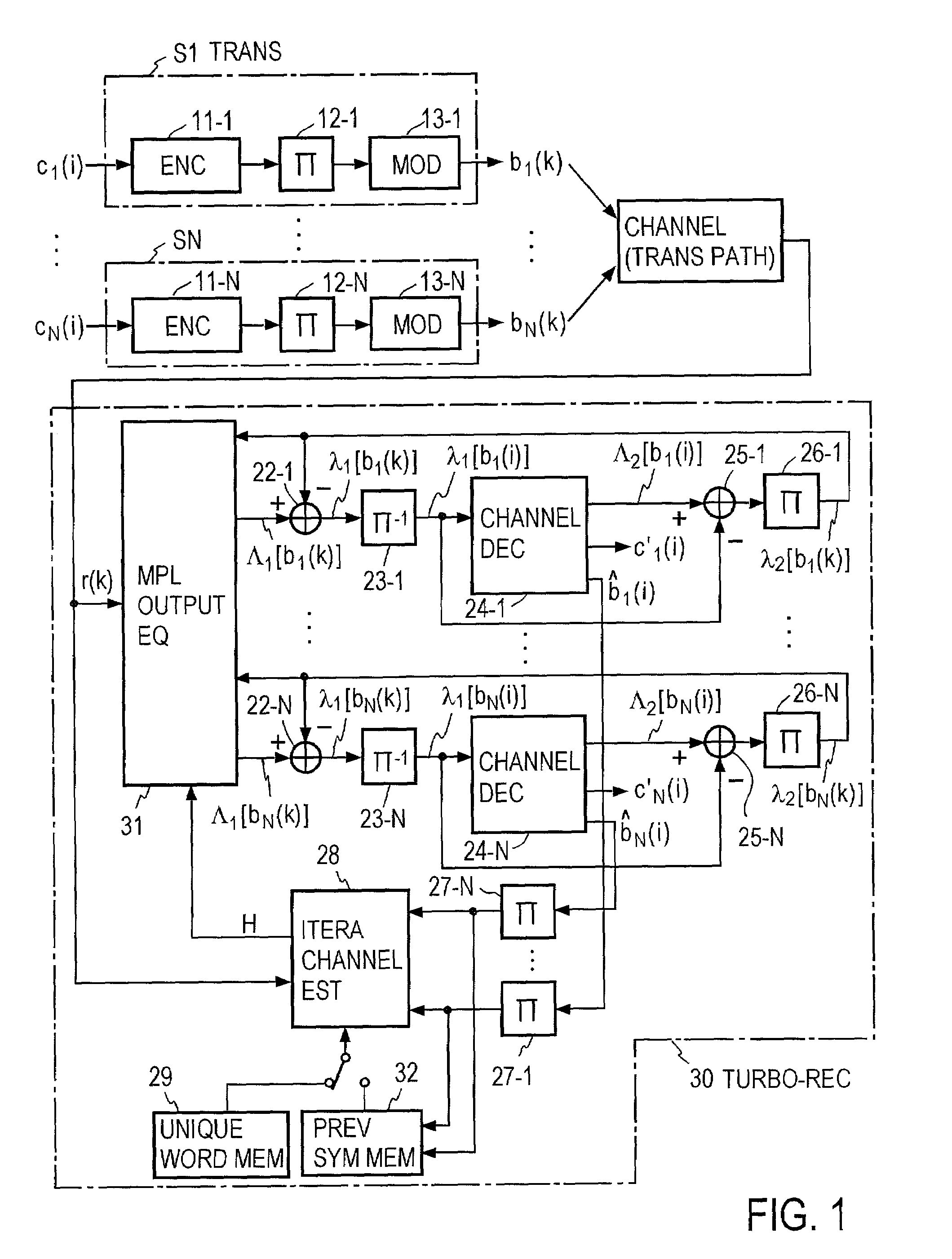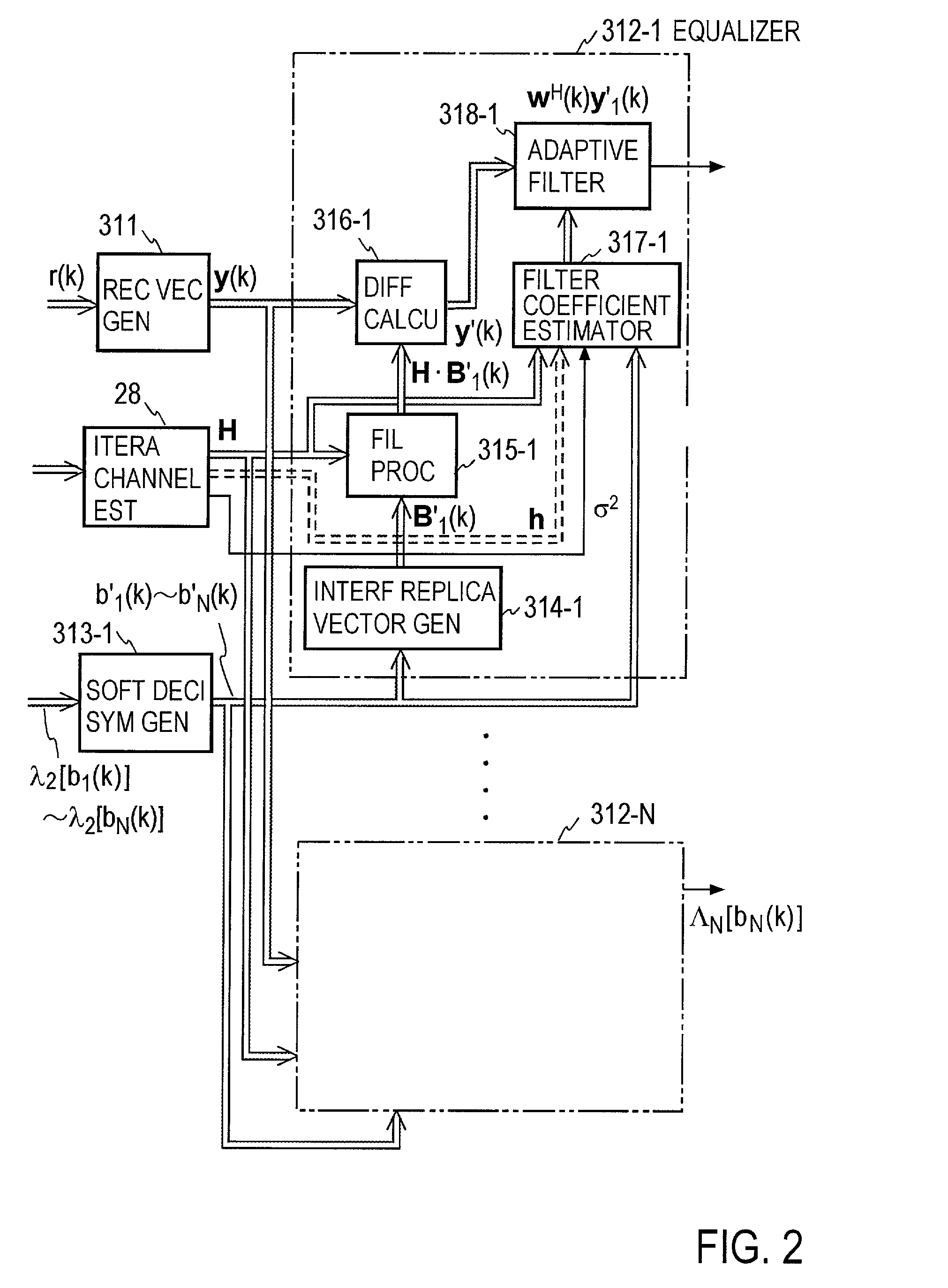Turbo-reception method and turbo-receiver
a technology which is applied in the field of turbo-receiver and receiver, can solve the problems of preventing an equalization in the equalizer, poor channel estimation accuracy, and affecting the transmission efficiency of intended data, so as to achieve good accuracy
- Summary
- Abstract
- Description
- Claims
- Application Information
AI Technical Summary
Benefits of technology
Problems solved by technology
Method used
Image
Examples
Embodiment Construction
First Aspect of the Invention (1)
[0063]FIG. 1 shows an exemplary arrangement of an MIMO system to which the present invention is applied.
[0064]In each of N transmitters S1 . . . SN, information series c1(i) to cN(i) are encoded in encoders 11-1, . . . , 11-N, and the encoded outputs are fed through interleavers 12-1, . . . , 12-N to modulators 13-1, . . . , 13-N as modulation signals, thus modulating a carrier signal in accordance with these modulation signals to transmit signals b1(k) to bN(k). In this manner, transmitted signals b1(k) . . . bN(k) from the transmitters S1, . . . , SN form N series transmitted signals.
[0065]A received signal r(k) which is received by a multiple output receiver through transmission paths (channels) is input to a multiple output equalizer 31. A signal received by the receiver is converted into a baseband signal, which is then sampled at one-half the symbol period, for example, to be converted into a digital signal, which is then input to the equalizer...
PUM
 Login to View More
Login to View More Abstract
Description
Claims
Application Information
 Login to View More
Login to View More - R&D
- Intellectual Property
- Life Sciences
- Materials
- Tech Scout
- Unparalleled Data Quality
- Higher Quality Content
- 60% Fewer Hallucinations
Browse by: Latest US Patents, China's latest patents, Technical Efficacy Thesaurus, Application Domain, Technology Topic, Popular Technical Reports.
© 2025 PatSnap. All rights reserved.Legal|Privacy policy|Modern Slavery Act Transparency Statement|Sitemap|About US| Contact US: help@patsnap.com



